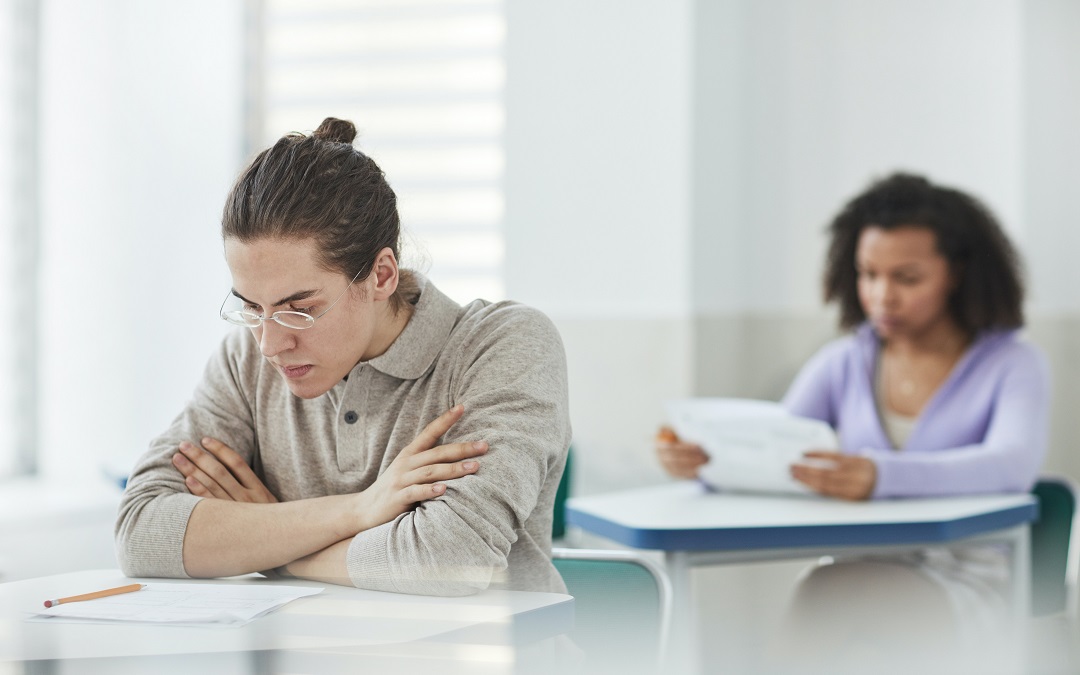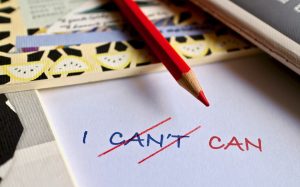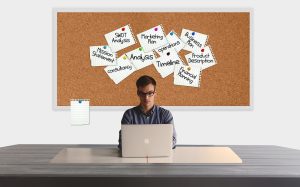One of the most important skills that students can learn is how to assess their work. This skill allows them to take control of their learning process, set personal goals, and track their progress. With the use of readily available technology, students are provided with the opportunity to assess their work in various formats. However, without a clear understanding of why self-assessment is important, many students will not take the time to do it.
In this article, we will explore why student self-assessment is essential and provide tips on building this skill. We’ll also introduce you to the HIGH5 strengths test, a powerful tool that complements self-assessment by helping students identify their unique strengths. By combining traditional self-assessment techniques with the insights gained from the HIGH5 test, students can develop a more comprehensive understanding of their abilities and potential for growth. Let’s get right into it.
What is student self-assessment?
Successful student self-assessment is the process of students evaluating their work to improve their understanding and learning strategy. This can be done in various formats, including writing reflections, drawing diagrams, recording audio or video, or using online tools. Self-assessment allows students to take control of their learning by setting learning goals, tracking progress, and identifying areas for improvement.It is an important skill that can be used in all subjects, and it can be adapted to different age groups and abilities.
The importance of student self-assessment
There are many reasons why student self-assessment is important. Understanding some of these reasons can help to motivate college students to take the time to assess their work.
Here are 10 of the most important benefits:
- Student self-assessment helps students take ownership of their learning.
- It allows students to set goals and track their progress.
- Student self-assessment helps students identify areas for improvement.
- It develops critical thinking skills.
- Student self-assessment encourages reflection on independent learning experiences.
- It teaches students how to evaluate their work.
- It helps students with authentic, human-centered learning.
- It prepares students for assessment by others (e.g., teachers and employers).
- Student self-assessment promotes metacognitive skills (thinking about thinking).
- It encourages learners to be self-motivated and resourceful.
As you can see, there are many benefits to student self-assessment. It’s a crucial skill that can help students succeed in all areas of their lives. To maximize these benefits, consider incorporating the HIGH5 strengths test into your self-assessment routine. This scientifically-backed assessment provides valuable insights into your top five strengths, allowing you to align your self-assessment efforts with your natural talents. By understanding your innate strengths, you can more effectively set goals, track progress, and identify areas for improvement. Let’s now look at how to build this skill in steps, keeping in mind how the HIGH5 test can enhance each stage of the process.
Pro Tip From HIGH5
When setting learning goals, align them with your top strengths identified by the HIGH5 test. This alignment can increase motivation and lead to more effective learning outcomes.
4 step strategy for student’s self-Assessment
There is no one-size-fits-all approach to student self-assessment. However, there is a general four-step strategy that can be adapted to different ages and abilities. Let’s go into more detail about each step.
1. Expose your students to examples of mastery
Creating folders with strong examples of high-quality work can be a great way to introduce self-assessment into the classroom. To take this approach a step further, consider incorporating the HIGH5 strengths test results. By understanding their top strengths, students can identify examples of mastery that align with their natural talents. For instance, a student with ‘Strategist’ as a top strength might excel at creating well-structured lab reports, while someone with ‘Storyteller’ strength might produce compelling narrative essays. This strengths-based approach to showcasing mastery can inspire students and provide a more personalized framework for self-assessment.
For example, if you are teaching a science class, create a folder with examples of what well-written lab reports look like. You can have your students take turns looking at the folders and seeing how each piece of work is different from the others but still meets a general standard. If you’re learning another language, creating a learning vocabulary with pronunciation can be a great way to introduce speaking standards to your students.
2. Provide your students with the vocabulary to analyze work
Providing young learners with basic vocabulary words such as ‘detail,’ ‘example,’ and ‘description’ can encourage them to use important self-assessment skills such as problem-solving and critical thinking. It’s also important that we don’t tell them the answer but rather let them find it themselves. In other words, we let our students make mistakes and have a learning journey instead of always trying to prevent their mistakes from happening in the first place. This fundamental principle for teaching and learning will be explored more thoroughly in a future post.
3. Teach your students how to give peer critiques
The purpose of giving a peer critique is not necessarily for students to make peer assessments but rather to identify areas for improvement using descriptive language. Commonly, one student will have peer feedback about something they don’t understand about another student’s work, and the other student won’t be able to explain it either because they didn’t know what they were doing when they created their work. This creates good post-critique discussions.
4. Visual Thinking Strategies
Visual thinking strategies can be used to support self-assessment by helping students identify specific elements of their work (e.g., the number of details, and quality of description). There are many different types of visual thinking strategies – each with its unique purpose and design. For example, there is a strategy for identifying main ideas and supporting details called ‘Venn Diagrams .’ Another strategy for assessing understanding is called ‘Think-Aloud Protocols.’ The possibilities are endless.
How to execute student self-assessment?
Teach Students Different Strategies of Self Assessment
The most important thing is to teach students multiple self-assessment strategies, including strengths-based approaches. One powerful tool to incorporate is the HIGH5 strengths test. This assessment helps students identify their top five strengths, providing a solid foundation for self-reflection. By understanding their unique strengths, students can tailor their self-assessment strategies to align with their natural talents.
For example, a student with the “Problem Solver” as a top strength might excel at using think-aloud protocols, while someone with “Analyst” strength might prefer detailed checklists. Integrating the HIGH5 test into your self-assessment toolkit will help students become more aware of their strengths and areas for growth, leading to more effective and personalized learning strategies.
One way to do this is to provide students with a graphic organizer such as a ‘Self-Assessment Checklist.’ Students can use this checklist to record their thoughts after completing a task. For example, a student might record the different steps they took to complete a math problem or the different strategies they tried when they were stuck on a reading passage. Another way to get students thinking about student self is by using think-aloud protocols. These protocols require students to talk aloud about their thinking process while completing a task.
Doing so will help them become more aware of the different steps to complete a task effectively. A final way to support students’ self-assessment is through Venn diagrams. These diagrams are very useful for comparing different elements of work. For example, they can compare two types of music or two books that were read in the class. There are many ways these kinds of self-assessment strategies can be used in the classroom, and it’s important to make sure the entire class understands their purpose and that they are done in an inclusive learning environment.
Practice
The best way to help students become better at self-assessment is through plenty of practice. As with anything else in life, the more they do it, the better they will become at it. One way to provide students with practice is by having students complete short tasks throughout the day. This can be done as a warm-up activity or as a quick assessment tool. For example, you might ask your students to identify the main idea and three supporting details from a reading passage.
Another way to provide practice is by using writing prompts. Writing prompts are great for practicing different types of self-assessment because they can be used for various purposes (e.g., narrative writing, persuasive writing, etc.). Finally, you can also provide self-assessment practices through collaborative tasks.
Collaborative tasks are an excellent way for students to assess each other’s work because they allow for peer-to-peer feedback. The important thing is to make sure that students are provided with multiple opportunities to practice different types of self-assessment. This will help them become more familiar with the strategies and better equipped to use them independently.
Find out your strengths and weaknesses
The final goal of self-assessment is to identify their strengths and weaknesses. This can be done in various ways, but the most important thing is that it is done in a safe and supportive environment. One of the most effective ways to identify your strengths is through the HIGH5 strengths test. This scientifically-validated assessment is completed independently by students through a series of thought-provoking questions.
Unlike traditional assessments that focus on weaknesses, the HIGH5 test is designed to reveal your top five strengths, providing a positive foundation for self-assessment. By understanding your innate talents, you can approach your studies with greater confidence and develop strategies that leverage your natural abilities. Moreover, the insights gained from the HIGH5 test can help you interpret other assessment results, such as standardized tests or achievement tests, in a more nuanced and strengths-oriented way.
Another way to discover strengths and weaknesses is by using standardized tests like the SAT or ACT. These tests are designed to measure a student’s academic ability, providing a great snapshot of where a student stands academically. Moreover, a different way to discover your strengths and weaknesses is by completing achievement tests such as the Woodcock-Johnson III Tests of Achievement (WJ-III).
These tests measure other areas of achievement such as reading, writing, math, etc. They are also useful because they allow students to compare their scores with others across the country. In addition, you can also have students complete learning portfolios, which are collections of work that reflect their different skills and abilities. These can be used over time to track student progress and identify areas needing more support.
Pro Tip From HIGH5
Develop a “Strengths-Based Self-Assessment Matrix” that matches different self-assessment strategies with the HIGH5 strength profiles. This can help students choose the most effective self-assessment methods based on their unique strengths.
Student self-assessment checklist
A checklist is to help you remember things without forgetting any details. Some of the common uses for checklists are when you need to run through all the necessary steps in a process or if you have many things to do and want to move through them systematically. A self-assessment checklist is an effective strategy for students because it helps them think about their skills in different areas. It also provides a detailed account of what they know and still need to learn.
A student can use a self-assessment checklist by asking themselves questions such as:
- What do I like doing?
- Do I like working with other people?
- What kind of work do I enjoy doing?
Self-assessment checklists are beneficial because they show progress over time; therefore, it’s important to be as detailed and thorough with the questions you ask. A checklist such as this one will help you remember things without forgetting any detail when assessing work. You can even create your checklist tailored to your specific needs by asking yourself specific questions that are important to you.
You can use the following questions to build your self-assessment checklist:
- What am I good at?
- What can I do easily and quickly?
- Which skills do I need to work on the most?
- What would be a good project that is challenging but also builds on my skills?
- What do I need to do to practice more?
- How can I get better at this?
By regularly completing a self-assessment checklist, students can track their progress over time and become more effective self-assessors.
Student self-assessment FAQ
How do I do a student self-assessment?
There are a variety of ways that students can complete self-assessments. One common way is through the use of a strengths test like the HIGH5 strengths test. Students can ask themselves a series of questions to better understand their strengths and weaknesses. Another way to self-assess is by using standardized tests like the SAT or ACT. Achievement tests such as the Woodcock-Johnson III Tests of Achievement can also be useful in identifying areas where a student might need more support. Finally, students can also complete learning portfolios which are collections of work that reflect their different skills and abilities.
How do you write a self-assessment sample for students?
This can be done in a variety of ways, such as through the use of checklists, standardized tests, or learning portfolios. When writing a self-assessment for students, it’s important to be specific and thorough with the questions you ask. This will help students track their progress over time and become more effective self-assessors.
How do I get my learners to take self-assessment seriously?
One way to get your learners to take self-assessment seriously is by emphasizing its importance. Explain that self-assessment is not just about identifying areas where they need improvement; it is also about celebrating their strengths and accomplishments. When getting your learners to take self-assessment seriously, you must also model self-assessment behaviors. You can do this by asking students questions about their learning and using those answers as a starting point for reflection.
When should students use self-assessment?
Because it’s a tool that facilitates reflection, self-assessment can be used at all stages of learning. Whether you are an effective teacher or parent, encouraging students to reflect on their learning is important for helping them improve their academic performance.








